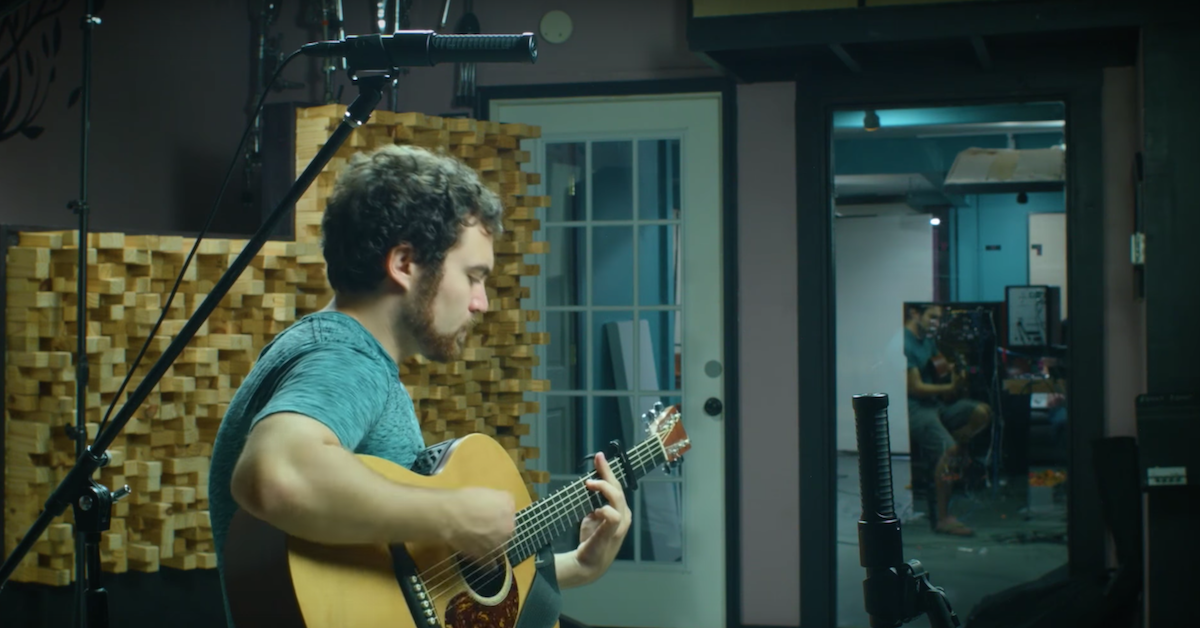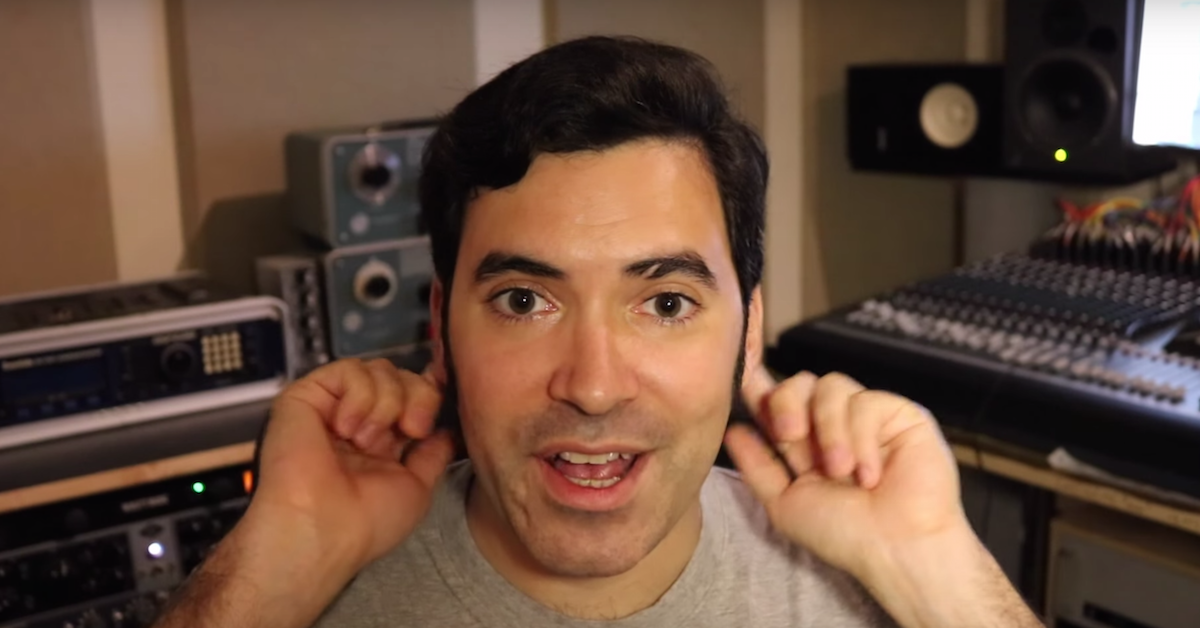5 Reasons to Put a Microphone in Front of Your Monitors
Article Content
➥ The new e-book from Cristofer Odqvist is available now
Once you hit the mixing stage with your track or you’re making the final tweaks to get your sounds absolutely right in your production, a microphone might not be the first thing that you reach for.
There are, nonetheless, some good reasons to put your microphone collection to use when that favorite plugin or outboard magic box just isn’t doing it for you.
1. Add Life and Realism
When using virtual instruments, especially sampled acoustic instruments, there can be a need for some additional sense of realism or ”life” in your programmed parts. One way to get this is to use a microphone (or two for a stereo image) and record the track coming out of your monitors.
Try backing your microphones off a bit if your room acoustics can handle it (as in, the sound of your room isn’t terrible, but if it is you should probably do something about that anyway). You’ll get the benefit of a bit of air and realistic imperfection, as well as the coloration of your mic and preamp.
You can also try blending this with the original track. Try moving the recorded track around in milliseconds or samples to ensure a good phase relationship between the tracks or simply just use the recorded track.
2. Complementary Tones
There is a rule of thumb, sometimes accredited to engineer Shelly Yakus, which states that if a vocalist’s voice is very mid-rangey, nasally or bass heavy, then you should use a microphone that is the opposite of that. This rule can be applied when recording instruments, or in this case, a pre-recorded or programmed track. So try running a harsh sounding synth part through a dynamic mic like an SM7 or a ribbon mic. For a dull sounding part you can use a brighter sounding mic and/or drive the preamp into slight distortion.
I probably wouldn’t use a mic just for subtle tonal changes, but when miking up your speakers for any other reason, the complementary rule is a good thing to keep in mind. Having said that, when it comes to really colorful microphones, the EQ change and color can be reason enough to reach into your mic locker.
3. Color
Using a mic that is very colored or nonlinear in nature can be a great tool to change the frequency spectrum of a track and change the color and attitude of a specific part in your arrangement. I own a Copperphone mic from Placid audio, it’s an extremely colored mic with a very limited frequency response. It sounds kind of like an old radio broadcast from the 1950’s and can add crazy amounts of presence and character to a sound.
There are lots of microphones that are very colored. Search eBay for some affordable vintage dynamics or try something like a Shure Green Bullet. Another way to do it is to use a lo-fi kind of speaker and a high fidelity microphone. There’s lots of fun to be had, and with some experimentation you’ll have a new arsenal of sounds at your disposal.
4. Reverb
Get an extension cord and put your monitor speaker in a nice reverberant place. It could be a bathroom, a large living room or a stairwell. Another option is to keep your monitors in place but put your microphone outside the mixing room, leaving the door open.
Try and get a few of these natural reverbs in your mix, whether it’s a long hall type of reverberation or more of an early reflection type of room sound. See what it does to the space in your mix, how does it live next to your algorithmic reverbs?
Don’t be afraid to process your recorded space with heavy EQ or heavy compression. Compression can really make a room sound way bigger than it actually is. You can also try sending a little bit of your natural space to an artificial reverb.
5. Special FX
One really cool trick is to create a kind of rotating Leslie speaker effect. A small directional mic works best for this.
You can achieve this effect by simply holding the mic cable and making the mic rotate over your head as if you’re swinging a lasso. Make sure the mic is at the height of your speaker and be careful not to damage the mic.
Another thing you can do is use a lo-fi sounding mic and send that track to a delay with no dry sound playing back. This way you’ll get the dry sound from the original track and you’ll get unique crunchy sounding delays.
Take Your Music to the Next Level
Making Sound is available now, a new e-book filled with 15 chapters of practical techniques for sound design, production, mixing and more. Quickly gain new perspectives that will increase your inspiration and spark your creativity. Use the 75 additional tips to add new sparkle, polish and professionalism to your music.





